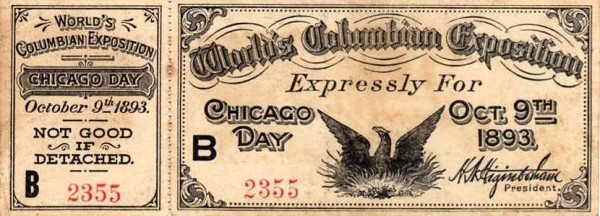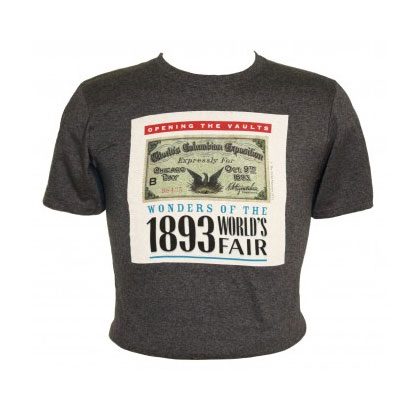 Like any good tourist trap, the Field Museum’s exhibit “Opening the Vaults: Wonders of the 1893 World’s Fair” culminates in the gift shop. It is an apt finale. A subtext of commerce runs through the show.
Like any good tourist trap, the Field Museum’s exhibit “Opening the Vaults: Wonders of the 1893 World’s Fair” culminates in the gift shop. It is an apt finale. A subtext of commerce runs through the show.
The theme is not expressed outright, but it’s not subtle. The first object on display is a ledger from the World’s Fair. While rife with symbolic content for a Marxist critique, it provides a look behind the scenes at how the Fair was maintained. How much money was being spent? How much was coming in? Would this make the Fair a successful venture? In order to maintain the Columbian Exposition, money needed to change hands.
Plenty of money moved around. The exhibit displays some of the tickets that were available. There were entrance tickets, tickets for shows and tickets for special exhibits. There is a modern parallel with Opening the Vaults; it is one of the Field Museum’s shows that requires an extra ticket. Money also circulated because the World’s Fair was not a museum. Its primary concern was to not enlighten the public with cultural artifacts behind glass. It served to establish trade. The Columbian Exposition had 25 million visitors. The 1890 U.S. census reported a population of 62,979,766 people. Roughly forty percent of the Americans visited the Fair. According to Opening the Vaults, there were people who mortgaged their homes in order to attend the Fair. Many of the items that we would find from the Exposition were objects that were for sale. Over a third of Americas would have been introduced to new products. Cracker Jack debuted at the Fair, but Opening the Vaults shows original bottles of exotic goods like olive oil. The goods that were sold were not necessarily tokens or souvenirs, but supplements to daily life.
The Field Museum is something to a testament of commerce. Marshall Field was an entrepreneur who entered a dry goods business in 1865 with Potter Palmer (of the Palmer House Hotel) and Levi Leiter. Field, Palmer, Leiter & Co. became Marshall Field and Company in 1881. (The Marshall Field’s flagship store on State Street became a Macy’s in 2006.) Marshall Field’s million-dollar endowment named the Field Museum of Natural History (now simply the Field Museum).
The gift shop provides a denouement to the experience. Whereas the exhibition allows the viewer to re-enact the experience of the World’s Fair by re-displaying objects that were on display 120 years ago, the shop largely commemorates Opening the Vaults. There are plenty of tote bags, shot glasses and mugs. I was hoping for some kind of World’s Fair t-shirt that might lend itself to a steampunk casual style, but the Ferris wheel and 1893 Fair Chicago Day Ticket designs were not really my taste. There was a bit of confusion over an interesting mug. It was in a display case marked “estate.” The salesperson took it out to show me and said that it was seven-fifty. I couldn’t tell if it was a reproduction for $7.50 or a $750 antique. For the historically minded, the shop has a selection of books that were utterly appropriate: Erik Larson’s The Devil in the White City, Karen Abbot’s Sin in the Second City and the reprint of Chicago by Day and Night.
While I may not have picked up any souvenirs from Opening the Vaults, I gained a fresh perspective on the Columbian Exposition and it’s place in American culture. My wife also took a picture of a 120-year-old pudgy stuffed sea lion.


There are no voices yet... Post-script us a message below, won't you?